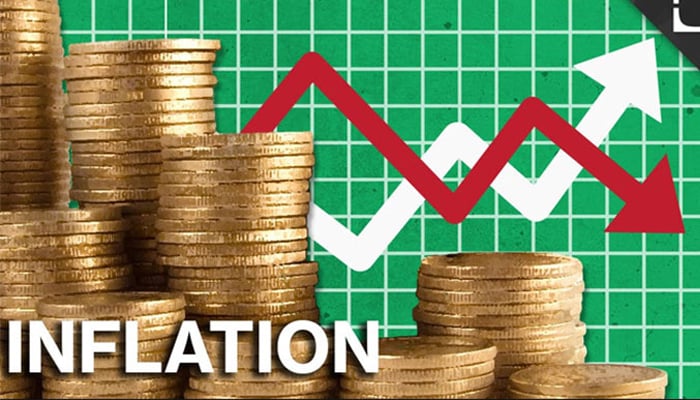Despite catastrophic floods, Pakistan’s economy is contracting and inflation is rising.

About 2% economic growth is anticipated in Pakistan for the current fiscal year, which ends in June 2023. The slower development would be due to damage and disruptions brought on by catastrophic floods, a tight monetary policy, rising inflation, and an unfavorable global environment, according to the World Bank’s October 2022 Pakistan Development Update: Inflation and the Poor. Real GDP growth is anticipated to reach 3.2 percent in the fiscal year 2024, signaling a modest recovery.
Given the current flooding, poverty will probably get worse in the hardest-hit areas. Without resolute relief and recovery initiatives to aid the poor, preliminary projections indicate that the national poverty rate may rise by 2.5 to 4 percentage points, putting between 5.8 and 9 million people in poverty. As Pakistan struggles with issues including a sizable current account deficit, huge public debt, and decreased demand from its traditional export markets during muted global growth, macroeconomic risks also remain high.
According to Najy Benhassine, the World Bank’s Country Director for Pakistan, “the recent floods are projected to have a significant detrimental impact on Pakistan’s economy and the poor, largely through the interruption of agricultural production.”
“The government must strike a balance between addressing the significant needs for relief and recovery and continuing with the long-overdue macroeconomic changes.” It will be more crucial than ever to make headway on crucial structural reforms, notably those in the energy sector, and carefully target assistance to the poor. It will also be crucial to keep the budget deficit within manageable bounds and maintain a restrictive monetary policy stance.
This update also provides some approaches for reducing the negative effects of rising inflation. Pakistan’s inflation is predicted to be approximately 23 percent in FY23 due to flood-related shortages of food and other necessities, rising energy costs, and challenging external circumstances, such as tighter global monetary conditions. The Update demonstrates that the poor will be disproportionately affected by rising inflation.
Energy subsidies have historically been used in Pakistan, but our study demonstrates that doing so disproportionately benefits wealthier households and imposes unaffordable fiscal costs. The goal going forward should be to control inflation through sensible macroeconomic measures. These should be complemented by steps to eliminate the distortions that hinder commerce and productivity, as well as targeted aid for those who are most negatively impacted by price increases, such as enhanced social safety programs.
The South Asia Economic Focus, a twice-yearly World Bank study that analyses economic developments and prospects in the area and assesses the policy problems faced by governments, is complemented by the Pakistan Development Update.
The Fall 2022 edition, Coping with Shocks: Migration and the Road to Resilience, published on October 6, 2022, demonstrates how recent significant global and regional shocks, such as rising inflation, the effects of the global food, fertilizer, and fuel shortages, the economic crisis in Sri Lanka, and the devastation caused by the catastrophic floods in Pakistan, are dampening growth in South Asia. Additionally, it examines how COVID-19 will affect migration and how labor mobility and migration might aid in economic growth.
How concerned should we be about the economy of Pakistan?
Despite the commencement of an IMF funding program in August, worries about the state of Pakistan’s economy are once again growing as foreign reserves decline, the local currency falls, and inflation remains at levels not seen in decades. An economy that has been in a spiral for months was to be stabilized by the IMF scheme. The nation with nuclear weapons has been impacted by outside shocks like other developing countries that are reliant on imports of goods like oil, gas, and other commodities.
Then, in late August, Pakistan was plagued by significant flooding that resulted in the deaths of over 1,500 people and billions of dollars’ worth of damage, adding further strain to its financial situation. The main concerns center on Pakistan’s capacity to pay for imports like food and energy as well as its ability to fulfill its international sovereign debt commitments.
Before the floods, the central bank anticipated that the country would need $33.5 billion in external borrowing for the July–June 2022–23 fiscal year. The goal of nearly reducing the current account deficit and debt rollovers from allies was to support the achievement of that number. Projections have been altered by the floods. To make up for the vital commodities lost in the flooding of millions of hectares of agriculture, exports are anticipated to decline and imports to increase. The central bank now has $8 billion in foreign exchange reserves, while commercial banks have another $5.7 billion. Despite IMF money, that hardly covers imports for a month.
Since the beginning of the year, the Pakistani rupee has lost 20% of its value, and in August it reached its lowest level ever, reflecting both the nation’s precarious financial state and the strength of the dollar. The cost of imports, borrowing, and debt payments are rising as a result of the currency drop, which will further worsen inflation, which is already at a multi-decade high of 27.3%.
Fears of default were immediately allayed by the IMF program, but worries have returned. stated that the United Nations Development Programme was recommending Pakistan delay foreign debt repayments and renegotiate loans with creditors since initial estimates placed flood damage at $30 billion and financial demands were increasing. The world’s bond markets responded quickly. The administration made it clear that it would satisfy private debt commitments and was only asking for relief from bilateral creditors.
Not all concerns center on the economy. In the next election, the government of Pakistan will be up against the famous opposition leader and former Prime Minister Imran Khan. Ishaq Dar, a well-known interventionist, has taken the role of a pro-reform finance minister. He spoke about lowering interest rates, cutting inflation, and bolstering the currency shortly after being sworn in.
The primary policy interest rate is at 15%, significantly below the projected average of 20% for the year and the inflation rate of 27%. Once more, Dar’s populist remarks sent the debt markets into a frenzy. Financing and reducing import demand are immediate options, but following the floods, requirements are increasing.
Pakistan is shut out of the global capital markets, however, since investors demand a 26 percentage point premium to hold its international bonds over haven U.S. Treasuries. Some signs point to the next IMF transfer being speedier and front-loaded to aid Pakistan in dealing with the floods, although the program expires in the middle of 2023. According to the administration, more money from other multilateral lenders is anticipated.

Qatar, Saudi Arabia, and the United Arab Emirates have each promised to spend $5 billion. Both confidence and finances would increase as a result. Additionally, Riyadh and Doha’s energy payment facilities, through which Pakistan purchases LNG, will lessen the strain on the nation’s current account. Pakistan is in communication with holders of bilateral debt, such as the Paris Club, to restructure payments. But the crucial factor is China, which is responsible for about $30 billion of Pakistan’s debt, including loans from its state-owned banks.
Pakistan has never missed a payment on its debt to other countries. It was emphasized by the head of the central bank and the previous finance minister that a default was not imminent. The government has $1 billion in debts due in December that need to be paid. The fiscal years 2022–2023 will see interest payments totaling almost $600 million. However, the next complete bond redemption won’t happen until April 2024.
All of the main credit rating agencies have since June lowered their outlooks, classifying the country as very risky and speculative. Pakistani officials said that their country will be able to make immediate repayments. Widespread protests sparked by the financial crisis led to the removal of the president and the government of Sri Lanka, another nation in South Asia. The Pakistani government claims that there are important differences between Pakistan and Sri Lanka, which is much smaller yet has never defaulted until the current crisis.
Political unrest and external shocks from the global commodities shortage have fueled the catastrophe. Energy is often the subject of one-third of Pakistan’s import payments. According to the statistics agency, imports of the petroleum group, which includes LNG, increased by more than a year to $23.3 billion in the most recent financial year. The majority of its power is generated by LNG, whose costs are still high and whose availability will decrease as winter approaches.
Despite record-high remittances from overseas, increasing energy costs drove Pakistan’s current account deficit to over $17 billion—close to 5% of GDP—in the most recent fiscal year, six times larger than in 2020–21. The growing deficit was partly a result of an overheated economy. In the most recent fiscal year, imports increased by 42% to a record $80 billion; exports likewise reached a record of about $32 billion but increased by 25%.
Pakistan, a country of 220 million people, has a $350 billion economy, and its foreign accounts have long been a cause of worry. Since 1958, the IMF has bailed Pakistan out more than 20 times. Since Pakistan gained independence in 1947, military coups, wars with India, Islamist insurgencies, the emigration of millions of Afghan refugees, and bad governance have all impeded long-term objectives in that country. Due to its low industrial output capacity and inability to replace imports during periods of economic boom, Pakistan is vulnerable to external shocks.
edited and proofread by nikita sharma




